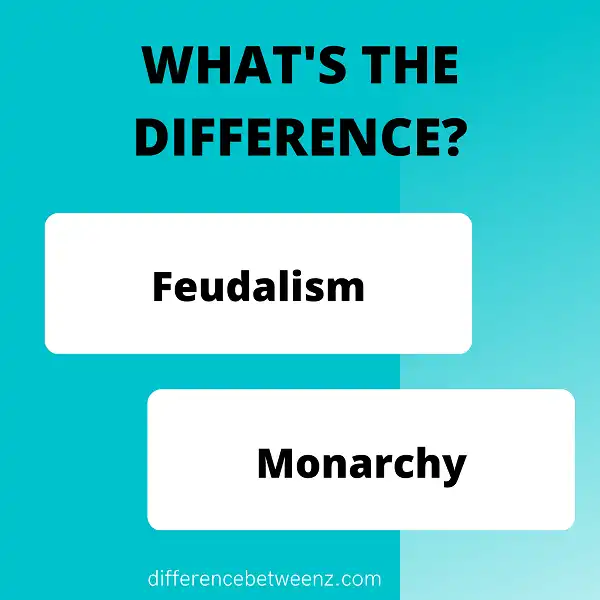Medieval Europe was an interesting time period full of different kinds of government structures. Feudalism and monarchy were two of the most common systems, but what’s the difference between them? This blog post will explore the differences between these two systems and how they impacted society during the Middle Ages. Stay tuned for more!
What is Feudalism?
Feudalism was a social and political system that dominated Europe during the Middle Ages. Under feudalism, a small group of powerful nobles owned all the land and controlled its resources. In exchange for providing protection to the peasants who worked the land, the nobles demanded loyalty and service. This system of servitude became known as feudalism. Feudalism began to decline in the late Middle Ages, as the power of monarchs began to grow and the peasantry became more assertive. However, the legacy of feudalism can still be seen in many modern societies, where economic inequality and political corruption remain rife.
What is Monarchy?
Monarchy is a form of government in which sovereignty is usually held by an individual, the monarch, who normally rules for life or until abdication. The monarch may be assisted and advised by a Council of Ministers or other advisers appointed at his or her discretion. Monarchy usually occurs as a nation’s last stage of development. In the ancient and medieval world, most monarchs were autocrats, who had absolute power over their people. In some societies, such as constitutional monarchies, the monarch’s power is limited by law or by convention. Monarchy has often been contrasted with democracy and republicanism, with the former seen as a more traditional form of government and the latter associated with modern values such as equality before the law, popular sovereignty, and human rights.
Difference between Feudalism and Monarchy
- Feudalism was a social and economic system that dominated Europe from the 9th to the 14th centuries. Under feudalism, Society was stratified into three distinct classes: the nobility, the clergy, and the peasantry. The nobles were a small class of powerful landowners who enjoyed special privileges and rights conferred on them by the king.
- The clergy was the religious leader of Feudal society, while the peasantry was the largest and most oppressed class. Peasants worked the land owned by nobles and paid them rent, taxes, and fees. In return, they received protection from the nobility and had access to common lands for grazing their livestock and growing crops.
- Monarchy is a form of government in which a single person – the monarch – wields absolute power over the state. The monarch may be either a hereditary ruler or an elected head of state. In most monarchies, the monarch is also the head of government, but this is not always the case. For example, in constitutional monarchies, such as Britain and Japan, the Monarchoccupies a purely ceremonial role while executive power is wielded by an elected Prime Minister.
Conclusion
The difference between feudalism and monarchy is that a monarchy is a hereditary form of government in which one family rules for an indefinite period of time. A monarch may be a king, queen, or emperor. In contrast, feudalism is a system where land is owned by the nobility, and peasants are granted use of the land in exchange for military service and other duties. There are many different types of monarchy, each with its own set of benefits and drawbacks. It’s important to understand the differences between these two systems when you’re studying world history so you can better understand how our world has developed over time.


